Poodle Colors Guide [With Photos]
Historically, we bred poodles to be duck retrievers. Their famous Poodle caots helped them swim while protecting vital parts of their bodies. From red to gray, black to white – and even super rare caots like merle – Poodles are striking to look at!
Today’s poodles are less likely to hunt ducks, but they’re still popular dogs for many other reasons. What people often don’t realize is how many colors the poodle comes in.
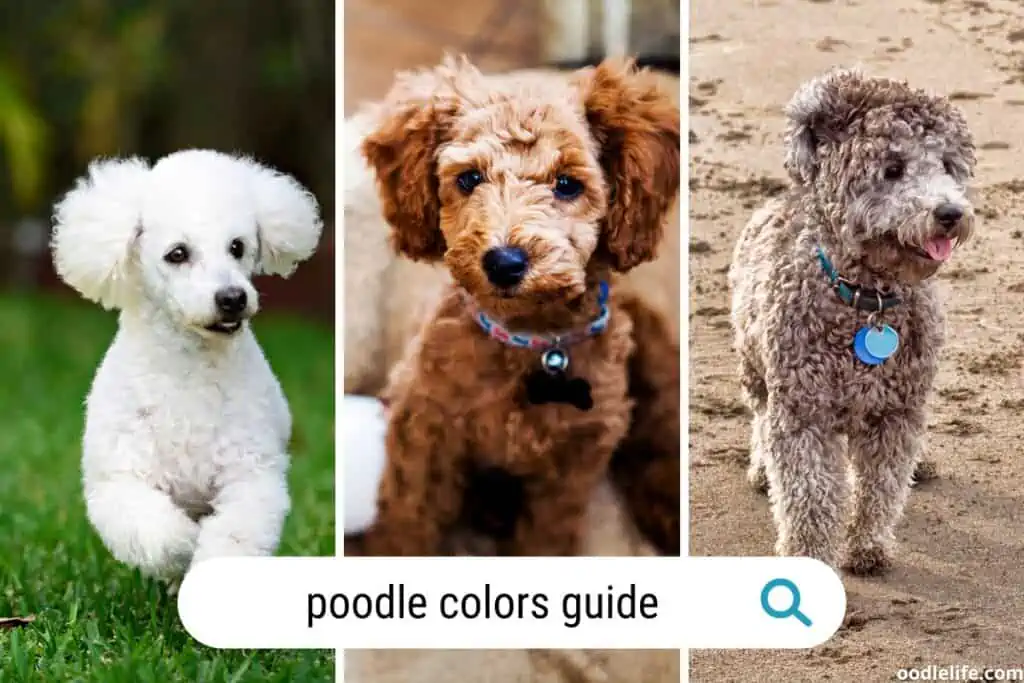
What Colors Do Poodles Come In?
There are as many shades and variations of Poodle coats as there are Poodle personalities.
These dogs typically exhibit one color across their coat. However, silver beige and café au lait coat types are exceptions to this rule.
In addition to these distinctive solid color poodle coats, the AKC also recognizes:
- Apricot
- Black
- Blue
- Brown
- Cream
- Gray
- Red
- Silver
They also recognize some two-tone or partial coat colors, such as cafe au lait and silver beige.
Apricot Poodle
Apricot Poodle coats are a surprising variation on the recessive red gene. Like other red variations, for a poodle to exhibit this color, it needs a pair of recessive red genes. However, it’s impossible to tell what shade of red the gene pair will produce.

Apricot poodles look reddish-golden and are incredibly rare. It’s popularly believed apricot was one of the last poodle colors breeders tried introducing into the Poodle lineage.
Black
Black is one of the most ubiquitous poodle colors because the gene that expresses it is dominant. Solid black Poodles won’t show any other coat color.
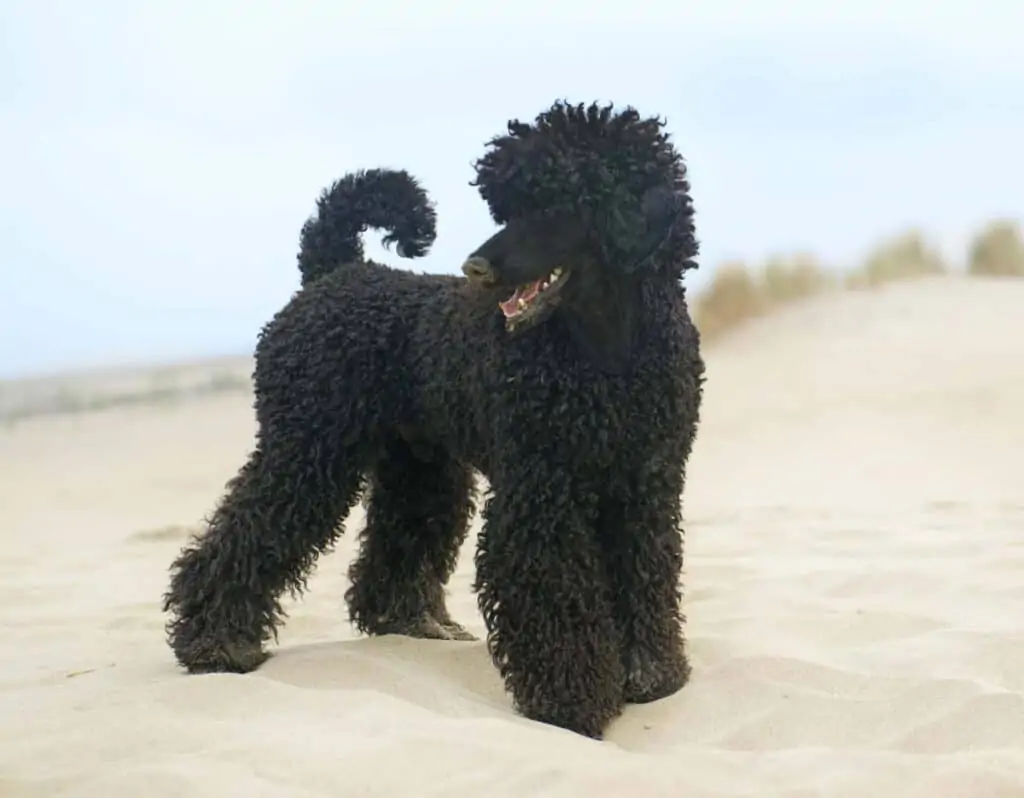
Depending on the season or even your poodle’s age, their black coat may change color. You’re most likely to notice this in the summer.
Depending on how often your black poodle is out in the sun, his fur may fade to reddish. It usually regains some of its darker pigment over the winter. Over time though expect a black Poodle coat to lighten.
Blue Poodle
Blue poodles, and indeed all blue dogs aren’t really blue. They’re a darkish gray that gives the impression the Poodle printer ran out of ink. In most dogs, it’s not a bad analogy either because the blue gene is a dilute version of the dominant black.
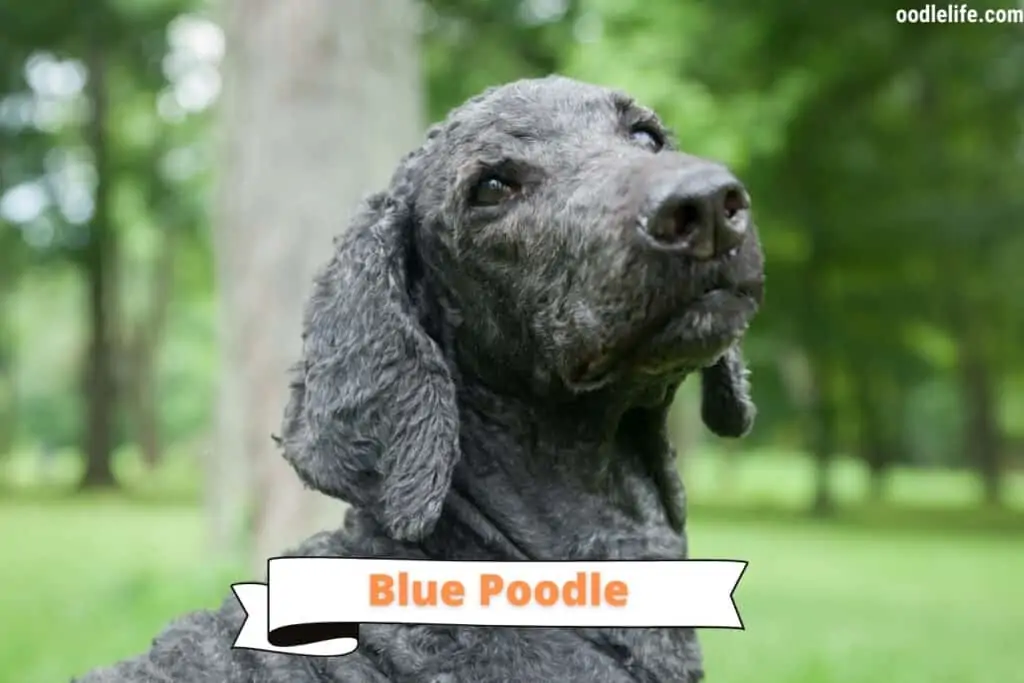
Not so in poodles. Light or dilute Poodles possess a graying gene, and this lightens their fur with time. One theory is that blue Poodles have only one copy of this graying gene and that allows them to keep more of their puppyhood black poodle color than silver or silver beige relatives.
It’s also incredibly difficult to identify blue poodles as puppies. Whereas some light Poodle colors are detectable at the six weeks mark, blue isn’t one of them.
Also, the atypicality of blue Poodles’ color means it can sometimes acquire a brownish tint. When this happens, registering it with the Kennel Clubs as blue may be challenging.
Brown Poodle
Like black poodles, the brown Poodle color is a common one. It’s the result of a dominant gene that overrides the most recessive ones.
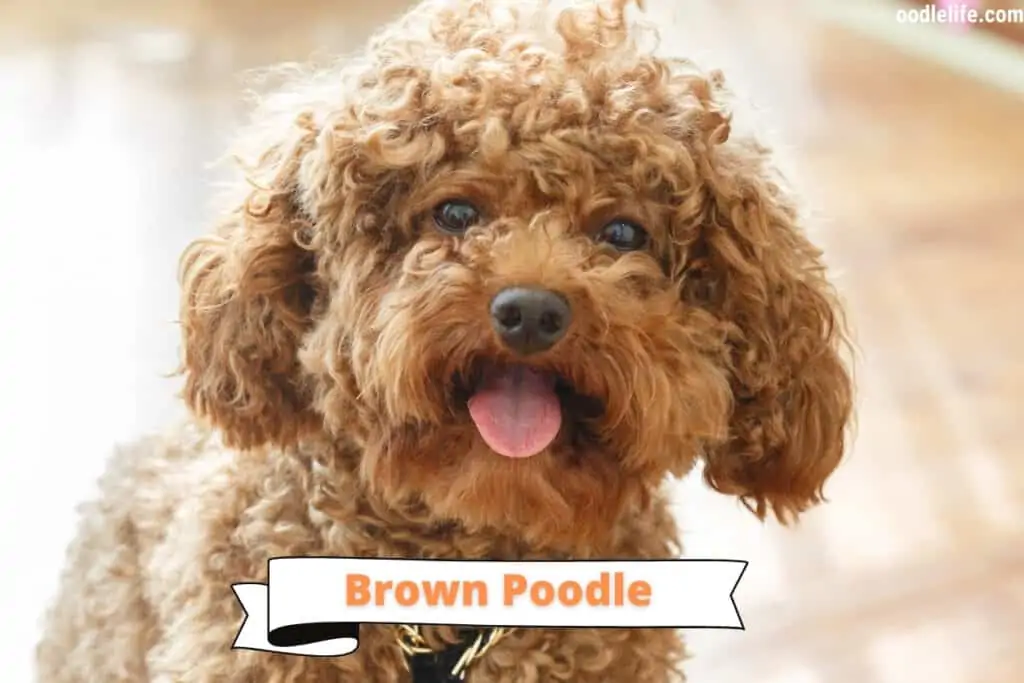
Also, like the black Poodle color, brown Poodles may develop a lighter coat as they age. When this happens, the resultant change leaves the poodle either:
- Silver
- Silver beige
- Café au lait
Cream Poodle
This unusual poodle color requires specific breeding. Like blue, it’s not the dilute brown many people think it is. Instead, a cream poodle needs the recessive red gene common to apricot poodles, and the graying gene gives light-colored poodles their dilute appearance.
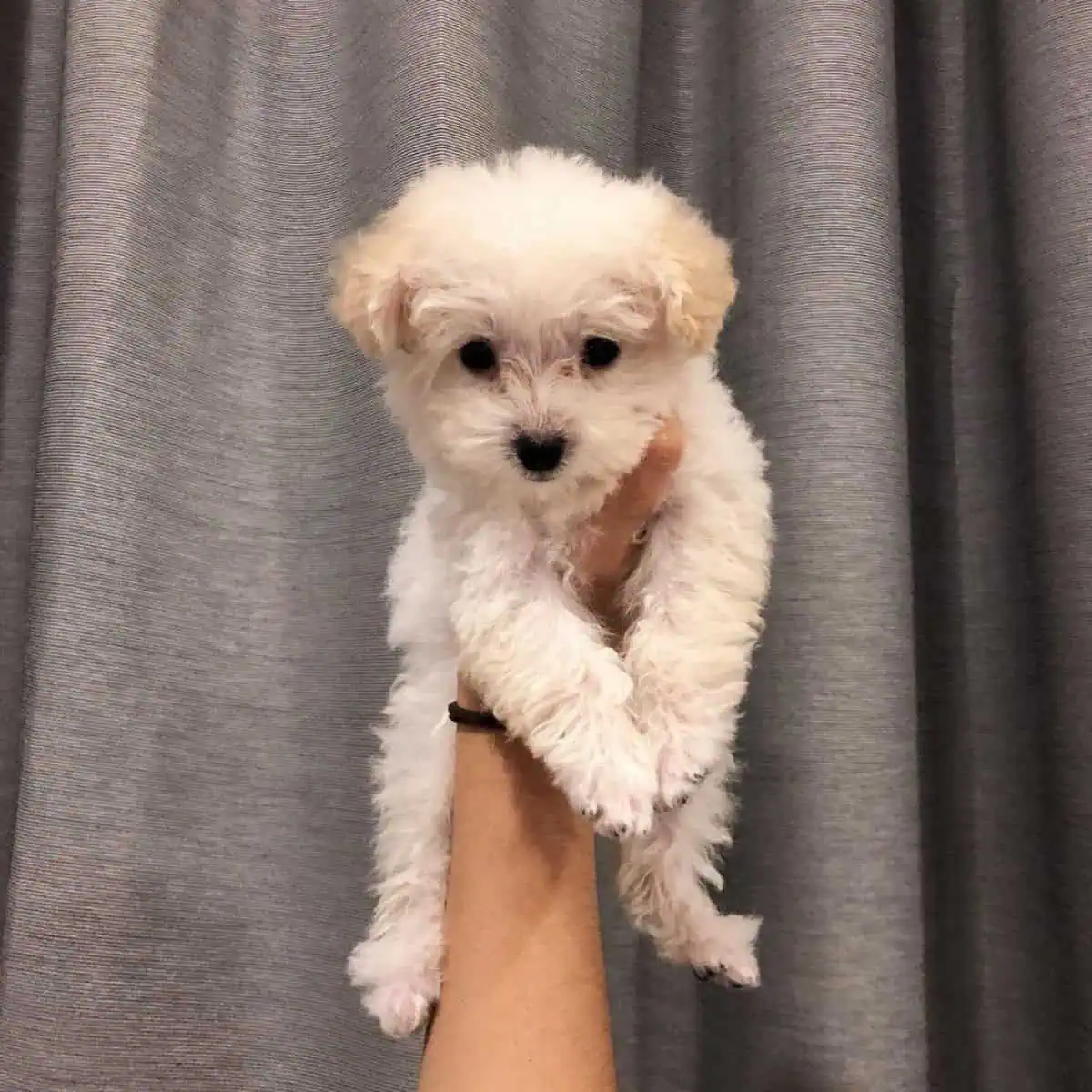
Alternatively, introducing the chinchilla gene, which also affects the intensity of a poodle’s coat color can result in a cream poodle.
Even if you do acquire a cream-colored poodle, you may not know it. That’s because there are so many variations of white in white poodles that it’s easy to misidentify a cream poodle as a white one.
Gray Poodle
Some poodles are born gray, but not all of them. Others are born black and possess something called the progressive graying gene.

The progressive graying gene is dominant and can also occur in brown and blue dogs. Typically, if one parent has it, there’s a 50% likelihood your poodle puppy inherited the progressive graying gene.
If a poodle has the progressive graying gene, you will notice it when the puppy is between two and three months old. Thereafter, they will gradually shift color until they are completely gray, though you may continue to notice subtle variations in your poodle color over the years.
Red Poodle
Red poodles exhibit a range of reds, from deep rust reds to faded, more apricot colors. The red gene is recessive, and for a poodle to exhibit a red color, it needs multiple copies of the red gene.
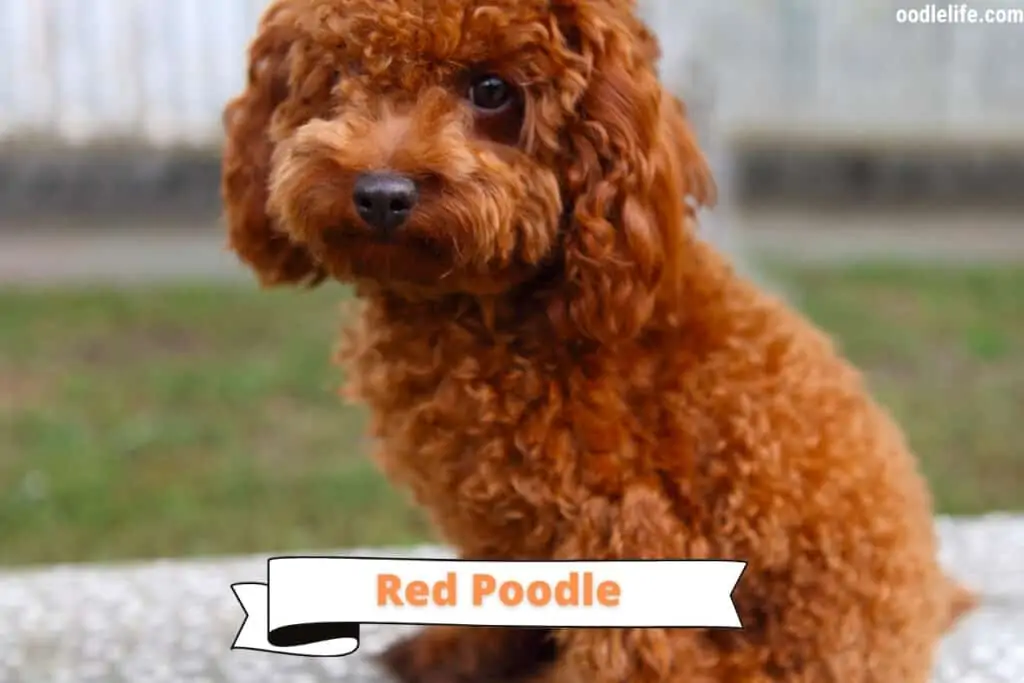
One of the reasons for the discrepancies between red poodle coat colors is that it’s common for these recessive coats to carry an equally recessive fading gene in the DNA.
However, although some breeders believe the red and apricot genes share DNA, others theorize that the red poodle color derives from a separate gene called ‘Rufus.’
Whatever its origin, the recessive nature of red makes it an uncommon poodle color. It was also an unofficial poodle color for years, and was only accepted into the American Kennel Club’s list of recognized poodle colors in 1980.
Silver Poodle Coat
Silver is distinct from gray in that it occurs without the progressive graying gene but with the allele for silver.

You can detect a silver-colored poodle puppy as early as six weeks. To do this, most breeders shave the muzzle area and look for noticeable lightening. But you may also see ‘clearing’ in the paws and face.
Because silver poodles start black, it’s common for them to have brown eyes.
Silver Beige
Silver beige poodles start life as black poodle puppies. In addition to carrying the fading gene that produces silver poodles, they also carry a dominant brown gene. They are often bred by combining brown and silver or blue poodle parents.

This fades alongside the black, and the result is predominantly a faded brown with the silver integrated into patches throughout the coat. There is no way to anticipate how or where the silver will get distributed.
However, this isn’t the only presentation of silver beige that is possible. When it comes to prestige and pedigree, the lighter the silver beige poodle, the better.
Café au Lait
True to its name, the café au lait poodle looks like milky coffee. This dilute poodle color occurs when a brown gene and fading gene mix. But unlike silver beige poodles, there’s no need for the silver allele.

Instead, café au lait poodles exhibit much more white mixed into their coats. As with all fading poodle colors, you may notice variations over time.
Like blue poodles, café au lait poodles are hard to spot as puppies because they don’t exhibit any coat fading until much later in their growth. They may not completely clear or lighten until age three or even four.
White Poodle Coat
White is another solid poodle color. It’s distinctive in that, despite being a recessive color, it’s highly prevalent in poodles.
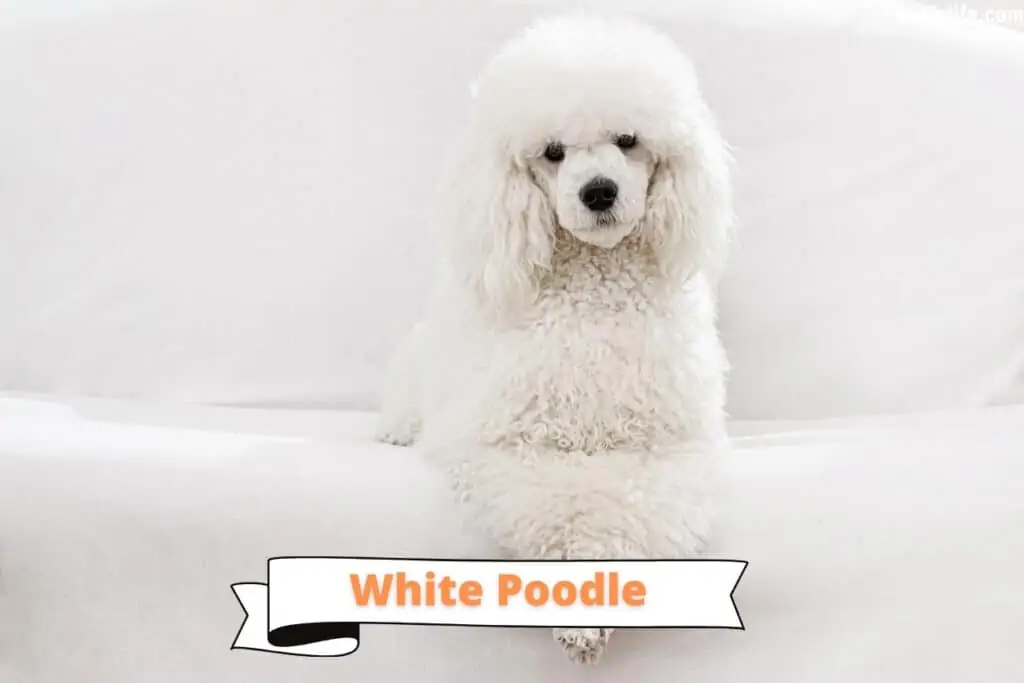
Breeders can’t identify all poodle genes and their purpose, and they haven’t successfully isolated what produces white pigment. That makes it possible to breed this particular poodle color.
However, even when bred for whiteness, you still see a range of shades of white. It is not the same as cream, which occurs when a dog possesses multiple copies of yet another recessive gene.
Prospective poodle owners should know that while the white poodle color is attractive, it comes with unique problems. In addition to being difficult to keep clean, white poodles are more prone to deafness than poodles of other colors.
Not all white poodles are deaf, but because of the smaller gene pool available to create the recessive white poodle color, chances are much higher a white poodle will be deaf than other solid-colored poodles.
Rarest Poodle Coat Colors
| Poodle Coat Color | Rarity (1-5) |
|---|---|
| Black | 2 |
| White | 2 |
| Apricot | 3 |
| Red | 3 |
| Silver | 4 |
| Gray | 4 |
| Cream | 4 |
| Brown | 4 |
| Café au Lait | 5 |
| Silver Beige | 5 |
| Merle | 5 |
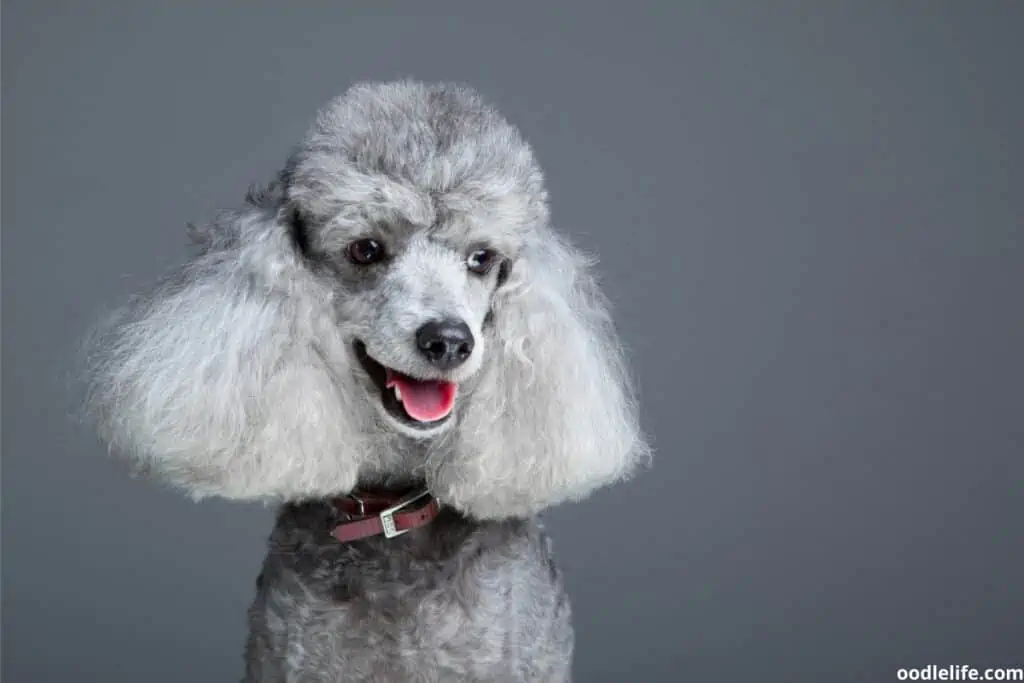
Summary
Poodles come in a variety of interesting colors, and each one is just as adorable as the rest. Some are incredibly rare, and others tend to be associated with certain personality traits or health conditions.
Knowing about the different colors poodles come in can help you feel more like an expert on your puppy.